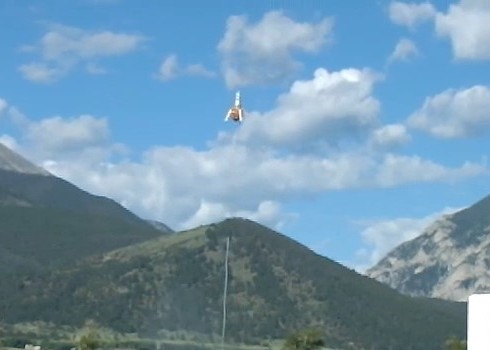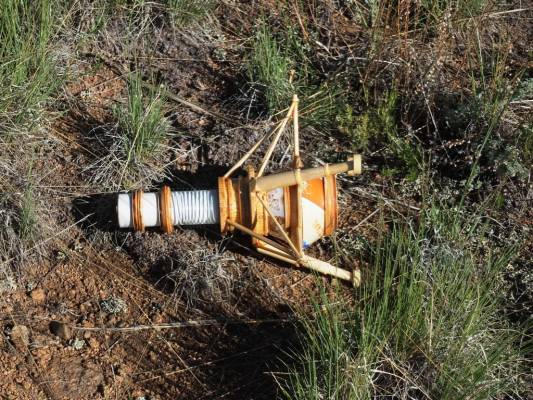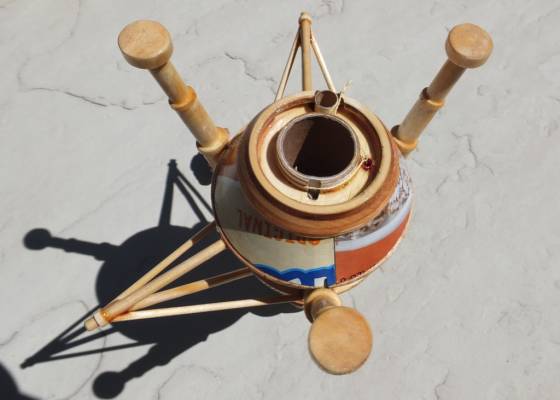A flying model rocket based on The Cygnus Probe Ship from the movie The Black Hole.
This rocket is mostly made from pine components turned on my wood lathe.
It is powered by a 29mm motor.
Getting the rocket to be stable has been quite a journey. It swing tests as stable, yet if you check out the flight reports, it flies stable under thrust, but then tumbles during the coast phase.
I've built and swing tested the rocket using an extension for the BT-55 main body section. I have yet to launch it with this new configuration.
Link to Build Thread.
| Flight Date: | 2022-07-08 |
| Rocket Name: | (BAR-10) The Cygnus Probe Ship |
| Flyer's Name: | John Simmons |
| Motors: | F52-5 |
| Expected Altitude: | 418 Feet |
| Wind Speed: | 5.00 mph |
| Launch Site: | Local |
| Actual Altitude: | 418 Feet |
Ignition was delayed, slight hesitation as is typical with a composite motor.
The F52-5 motor had almost no smoke during thrust and coast. I knew that and thought it would add to the launch. But in reality it makes the rocket hard to track.
The rocket accelerated quickly, plenty of speed at launch rod exit (41.2 mph per sim). Winds were less than 5 mph and from the north. The rocket did not weathercock.
The rocket was initially stable while under thrust, but was not stable during the cost phase. It tumbled end over end.
The simulation software estimated apogee @ 418 feet, but the rocket did not reach that height due to the tumbling during the coast phase (no altimeter was used).
At ejection the Kevlar broke.
The nose cone came down attached to the 18" parachute.
The rocket fuselage tumble recovered.
Visually as the nose cone descended, the chute was fully deployed.
The rocket ground hit south of the launch horse. It took a bit of time to find it since it was no longer attached to the chute.
Photo's were taken of the rocket at it's ground hit location. Upon further review the motor was no longer in the rocket, the motor clip was gone.
One of the three outriggers was missing and could not be located. It is speculated that the outrigger was knocked off at ejection by the nose cone.
What was learned from this flight?
The Kevlar shock chord I used was way to short and I should have used an elastic shock chord.
The motor clip needs to be bent over a thrust ring or a retaining ring at the ejection end of the motor. I didn't do that on this motor mount and at ejection the force just ripped the clip right out. This is especially true on a rocket that has a lot of nose ballast, and this rocket qualifies.
I designed this rocket to be scaled to the movie version. It needs a longer body tube for the 18" parachute, the Kevlar and the wadding
| Stage | Motor(s) |
|---|---|
| 1 | Aerotech F52-5 |
 |
 |


